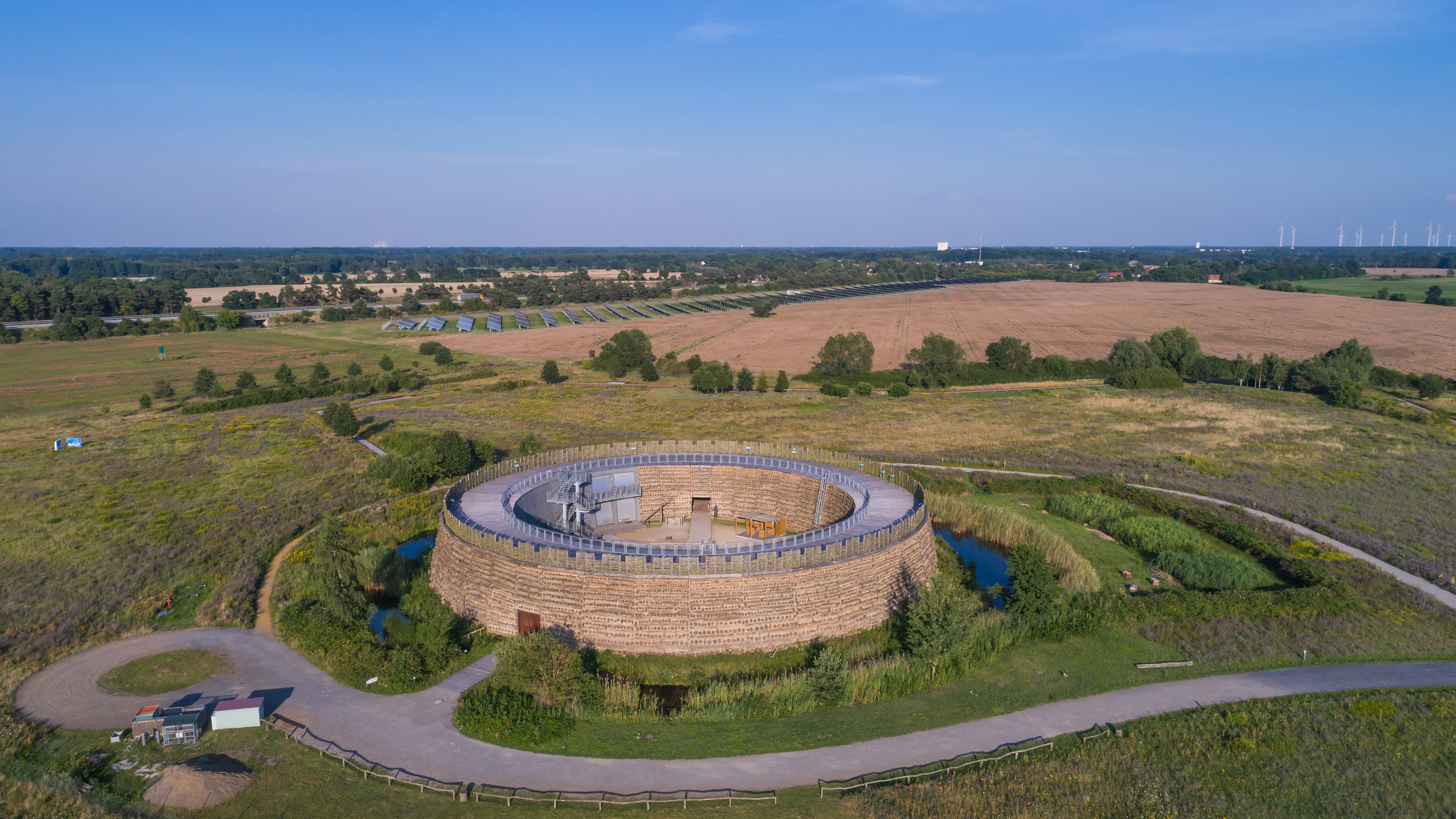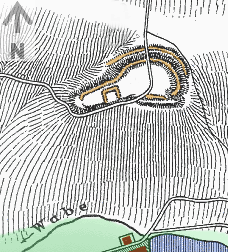Refuge Fort on:
[Wikipedia]
[Google]
[Amazon]
 A refuge castleCreighton, Oliver (2015). ''Early European Castles''. Bloomsbury. or refuge fort (german: Fliehburg, also ''Fluchtburg'', ''Volksburg'', ''Bauernburg'' or ''Vryburg'') is a
A refuge castleCreighton, Oliver (2015). ''Early European Castles''. Bloomsbury. or refuge fort (german: Fliehburg, also ''Fluchtburg'', ''Volksburg'', ''Bauernburg'' or ''Vryburg'') is a
 In Europe a multitude of large
In Europe a multitude of large
 A refuge castleCreighton, Oliver (2015). ''Early European Castles''. Bloomsbury. or refuge fort (german: Fliehburg, also ''Fluchtburg'', ''Volksburg'', ''Bauernburg'' or ''Vryburg'') is a
A refuge castleCreighton, Oliver (2015). ''Early European Castles''. Bloomsbury. or refuge fort (german: Fliehburg, also ''Fluchtburg'', ''Volksburg'', ''Bauernburg'' or ''Vryburg'') is a castle
A castle is a type of fortified structure built during the Middle Ages predominantly by the nobility or royalty and by military orders. Scholars debate the scope of the word ''castle'', but usually consider it to be the private fortified r ...
-like defensive location, usually surrounded by ramparts, that is not permanently occupied but acts as a temporary retreat for the local population when threatened by war or attack. In former times such sites were also described as giant castles (German: ''Hünenburgen'') because their origin was ascribed to giants.
History
 In Europe a multitude of large
In Europe a multitude of large protohistoric
Protohistory is a period between prehistory and history during which a culture or civilization has not yet developed writing, but other cultures have already noted the existence of those pre-literate groups in their own writings. For example, in ...
sites surrounded by earthworks has been uncovered by archaeological excavations, many over 100 metres in diameter, that are understood to be refuge castles. Amongst ancient historical references to them are the refuge castles of the Gauls
The Gauls ( la, Galli; grc, Γαλάται, ''Galátai'') were a group of Celtic peoples of mainland Europe in the Iron Age and the Roman period (roughly 5th century BC to 5th century AD). Their homeland was known as Gaul (''Gallia''). They s ...
described by Caesar
Gaius Julius Caesar (; ; 12 July 100 BC – 15 March 44 BC), was a Roman people, Roman general and statesman. A member of the First Triumvirate, Caesar led the Roman armies in the Gallic Wars before defeating his political rival Pompey in Caes ...
as ''oppida
An ''oppidum'' (plural ''oppida'') is a large fortified Iron Age settlement or town. ''Oppida'' are primarily associated with the Celtic late La Tène culture, emerging during the 2nd and 1st centuries BC, spread across Europe, stretchi ...
'', although they could also be permanent settlements. Similar ringwork (''Ringwall'') systems were built by the various Germanic and Slavic tribes, the latter until well into the Middle Ages
In the history of Europe, the Middle Ages or medieval period lasted approximately from the late 5th to the late 15th centuries, similar to the post-classical period of global history. It began with the fall of the Western Roman Empire a ...
period. Such systems are also known as hillforts (''Wallburgen''), the primary construction material being earth, but wood and stone were also used in a variety of construction methods.
As a rule they have no towers, but occasionally superstructures resembling gate towers occur (see Bennigsen Castle). Refuge castles of this type belonged to unprotected farming communities and offered protection to the population of the local region in case of a hostile attack, whilst the settlements themselves usually fell victim to plundering and destruction by the aggressors. The large size of refuge castles enabled them to provide stores and supplies in the event of a siege
A siege is a military blockade of a city, or fortress, with the intent of conquering by attrition warfare, attrition, or a well-prepared assault. This derives from la, sedere, lit=to sit. Siege warfare is a form of constant, low-intensity con ...
.
Later on during the Middle Ages this type of castle was also built by local farmers. These "farmers' castles" provided protection for country folk from marauding bands of troops. Their fortifications generally had little in common with the castles erected by the nobility
Nobility is a social class found in many societies that have an aristocracy (class), aristocracy. It is normally ranked immediately below Royal family, royalty. Nobility has often been an Estates of the realm, estate of the realm with many e ...
as residences, but often consisted just of earthworks and wooden palisade
A palisade, sometimes called a stakewall or a paling, is typically a fence or defensive wall made from iron or wooden stakes, or tree trunks, and used as a defensive structure or enclosure. Palisades can form a stockade.
Etymology
''Palisade' ...
s sited in easily defensible locations on hilltops or spurs.
Because the majority of refuge castles were not permanent settlements, archaeological excavations often produce little by way of finds.
In the Middle Ages fortified churches (''Wehrkirchen'') and fortress churches (''Kirchenburgen'') also acted as refuge castles. They were primarily utilised as the village churches, but their fortifications also made them suitable for use as temporary places of refuge for the villages. The wall of the churchyard, which was actually designed to protect the cemetery, was upgraded in church castles into a defensible defensive wall
A defensive wall is a fortification usually used to protect a city, town or other settlement from potential aggressors. The walls can range from simple palisades or earthworks to extensive military fortifications with towers, bastions and gates ...
(''Wehrmauer'') and even the church tower could be given a defensive function.
In Germany
* Allersburg near Loiperstätt, betweenDorfen
Dorfen is a town in the district of Erding, in Bavaria, Germany. It is situated 50 km east of Munich and 29 km south of Landshut.
Transportation
Dorfen is situated at the Munich-Mühldorf railway.
People
* Johann Georg von Dill ...
and Velden (Vils)
Velden is a market town and municipality in the district of Landshut (district), Landshut in Bavaria in Germany.
Geography
Velden lies on the border from Lower Bavaria to Upper Bavaria. The river Vils (Danube), Vils runs through the town. Velde ...
* Amelungsburg (Weser Uplands
The Weser Uplands (German: ''Weserbergland'', ) is a hill region in Germany, between Hannoversch Münden and Porta Westfalica, along the river Weser. The area reaches into three states, Lower Saxony, Hesse, and North Rhine-Westphalia. Important ...
)
* Amöneburg (Hesse
Hesse (, , ) or Hessia (, ; german: Hessen ), officially the State of Hessen (german: links=no, Land Hessen), is a States of Germany, state in Germany. Its capital city is Wiesbaden, and the largest urban area is Frankfurt. Two other major histor ...
)
* Babilonie
The Babilonie is a hillfort of the La Tène culture at a height of 255.6 metres above sea level on the northern edge of a rounded hill in the Wiehen Hills above the Lübbecke village of Obermehnen in the district of Minden-Lübbecke in the ...
(Wiehen Hills
The Wiehen Hills (german: Wiehengebirge, , also locally, just ''Wiehen'') are a hill range in North Rhine-Westphalia and Lower Saxony in Germany. The hills run from west to east like a long finger away from the main upland area of the Lower Saxon ...
)
* Barenburg
Barenburg is a municipality in the district of Diepholz, in Lower Saxony, Germany
Germany,, officially the Federal Republic of Germany, is a country in Central Europe. It is the second most populous country in Europe after Russia, ...
near Eldagsen
Springe is a town in the district of Hanover, in Lower Saxony, Germany. It is situated near the Deister hills, southwest of Hanover.
Town structure
* Springe (core settlement, seat of the mayor), population 13,184
* Bennigsen, population 4, ...
* Borlinghausen
* Büraburg
The Büraburg was a prominent hill castle with historic significance, on the Büraberg hill overlooking the Eder river near the town of Fritzlar in northern Hesse (Germany). Only foundation walls remain, and a church dedicated to St. Brigida.
...
(Hesse)
* Bummannsburg in Bergkamen
* Döben
* Dünsberg
Dünsberg is a hill slightly northwest of Gießen in Hesse, Germany. At 498 meters in height, it is the highest mountain in the Gießen and Wetzlar area.
On the southern slope of the hill, grave mounds were found from the Neolithic and the Bronze ...
(Hessen)
* Eresburg
The Eresburg is the largest, well-known (Old) Saxon refuge castle (''Volksburg'') and was located in the area of the present German village of Obermarsberg in the borough of Marsberg in the county of Hochsauerlandkreis. It was a hill castle buil ...
* Eringaburg
* Eiringsburg south of Bad Kissingen
* Grotenburg (by Hermann's Monument in the Teutoburg Forest)
* Heidenlöcher near Deidesheim
* Heidenschanze near Sievern
* Herlingsburg near Schieder-Schwalenberg
Schieder-Schwalenberg (Low German: ''Schüer-Schwalenberg'') is a town in the Lippe district, in North Rhine-Westphalia, Germany. It is situated approximately east of Detmold.
It consists of 8 communes, which have been combined to a town in 1970 ...
* Hohensyburg in Dortmund-Syburg
* Hünenburg (near Hedemünden
Hedemünden is part of the city Hann. Münden in southern Lower Saxony. Until 1930, it was an independent municipality. About 1500 people live in the village.
Location
Hedemünden lies on the lower part of the river Werra. This river starts ...
)
* Isenburg
* Late Roman hillfort, Katzenberg near Mayen
* Kukesburg
* Monraburg near Großmonra
* Mettermich (Rhön)
* Plößnitz
* ''Reitlingsbefestigungen''
* Ringwall Venne im Kottenforst near Bonn
* Sachsenberg Sachsenberg is a surname. Notable people with the surname include:
*Gotthard Sachsenberg (1891–1961), German World War I fighter ace
*Heinz Sachsenberg
Heinz ''Wimmersal'' Sachsenberg (12 July 1922 – 17 June 1951) was a German World War II ...
* Skidroburg in Schieder-Schwalenberg
Schieder-Schwalenberg (Low German: ''Schüer-Schwalenberg'') is a town in the Lippe district, in North Rhine-Westphalia, Germany. It is situated approximately east of Detmold.
It consists of 8 communes, which have been combined to a town in 1970 ...
* Tönsberg
The Tönsberg is a hill ridge in the Teutoburg Forest that reaches a height of and lies in the district of Lippe near Oerlinghausen. Hermann's Way runs over the Tönsberg for about 3.5 km.
Points of interest
Along Hermann's Way on the c ...
(Teutoburg Forest)
* Tüddern
* Wartberg (Heilbronn)
The Wartberg is a hill in Baden-Württemberg, Germany
Germany,, officially the Federal Republic of Germany, is a country in Central Europe. It is the second most populous country in Europe after Russia, and the most populous membe ...
* Wittekindsburg near Porta Westfalica
In Austria
* Refuge castle near Duel/Paternion
Paternion ( sl, Špaterjan) is a market town in the district of Villach-Land in the Austrian state of Carinthia. It is located within the Drava valley about in the north-west of the city of Villach.
Geography
Paternion is subdivided into six Ka ...
(Carinthia):
:Near the refuge castle on a hillock was a Late Antiquity
Late antiquity is the time of transition from classical antiquity to the Middle Ages, generally spanning the 3rd–7th century in Europe and adjacent areas bordering the Mediterranean Basin. The popularization of this periodization in English ha ...
period castellum
A ''castellum'' in Latin is usually:
* a small Roman fortlet or tower,C. Julius Caesar, Gallic War; 2,30 a diminutive of ('military camp'), often used as a watchtower or signal station like on Hadrian's Wall. It should be distinguished from a ...
built around 400 A. D., which had the task of protecting the road crossing in the Gailtal valley, i.e. it was not primarily designed as a refuge castle. During excavations, as well as the defensive system, an early Christian church was discovered in the interior of the castellum.
* Kreuzen Castle/ Bad Kreuzen (Upper Austria)
See also
* Cave castle * HillfortReferences
{{Authority control Castles by type fi:Linnavuori